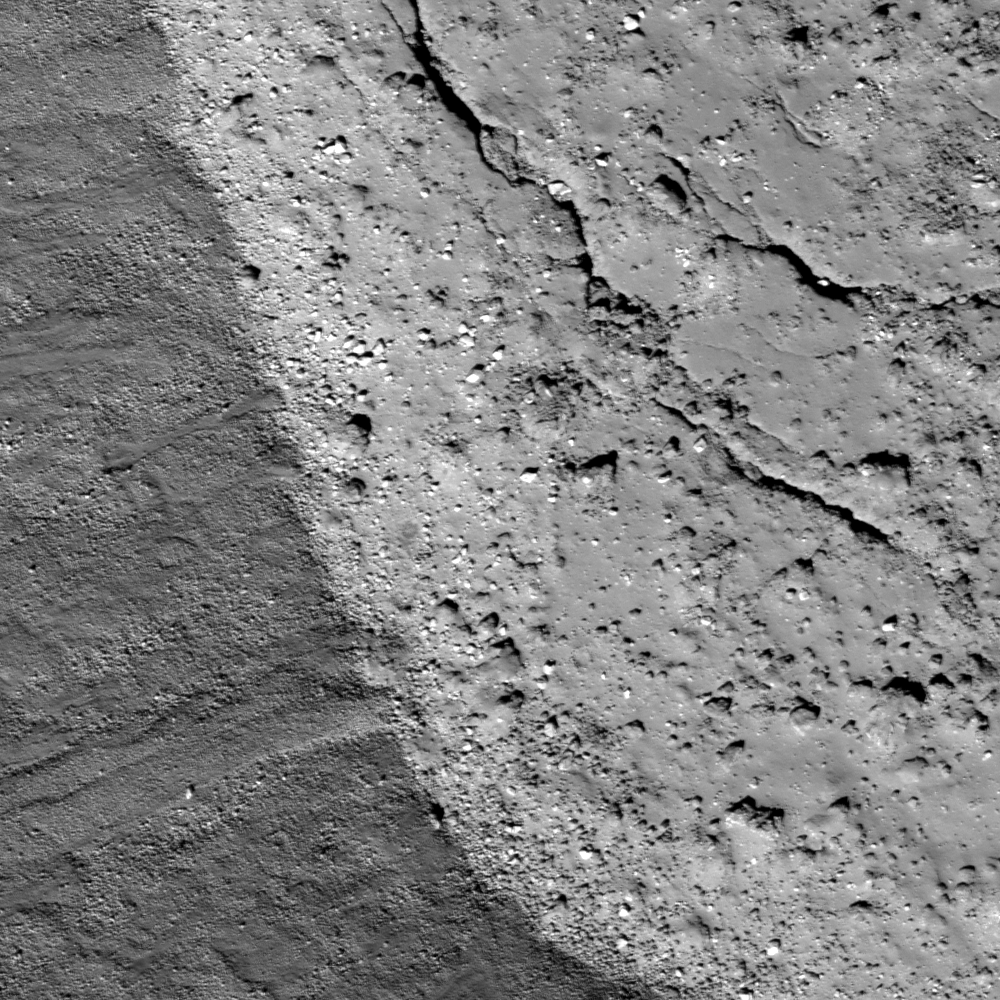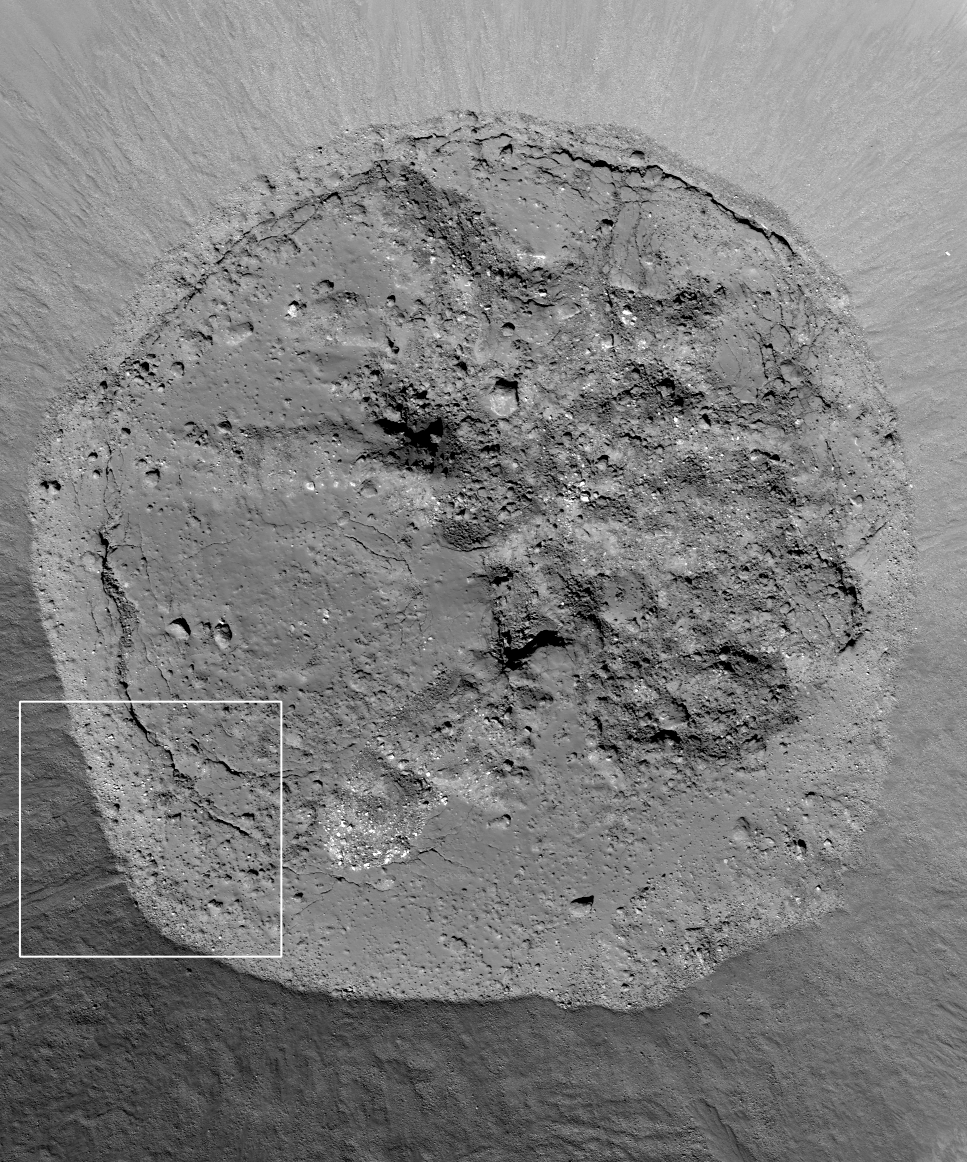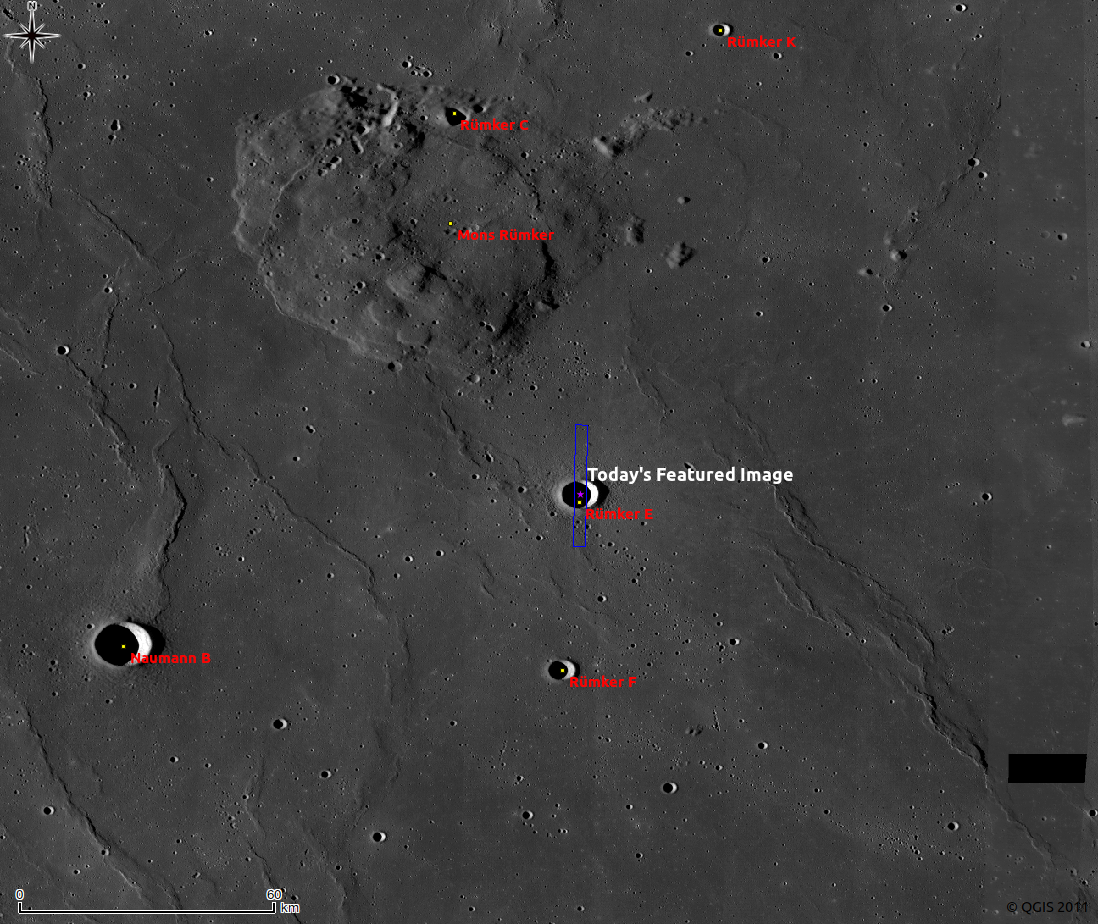
The floor of Rümker E crater is exhibits a variety of beautifully preserved impact melt features. The platy surface, partially submerged boulders, and flows form an invitation to explorers! The edges of the floor are sharply overlayed by debris avalanches from the cavity slopes. How did the flows seen on the left form? Are they impact melt or later debris flows?
Crater shapes are changing with time little by little, by slope failures inside the cavity, isostatic rebound, and magma intrusions (depending on the crater size). Debris flows in Rümker E will continue to mask the melt-covered floor, eventually the whole area. There are lots of degraded craters on the Moon showing no interior melt deposits, but they may be there now buried waiting for future astronauts to uncover. Impact melts are especially interesting to geologists because they are clocks. The melting resets the internal radiometric clock so even a small sample provides the means to date the moment the impact occurred.
Explore Rümker E floor in the full NAC frame by yourself!
Related posts:
Das crater, Anomalous mounds on the King crater floor, Mounds in a melt pond, Impact melt features in Tycho crater's floor
Published by Hiroyuki Sato on 27 July 2011

